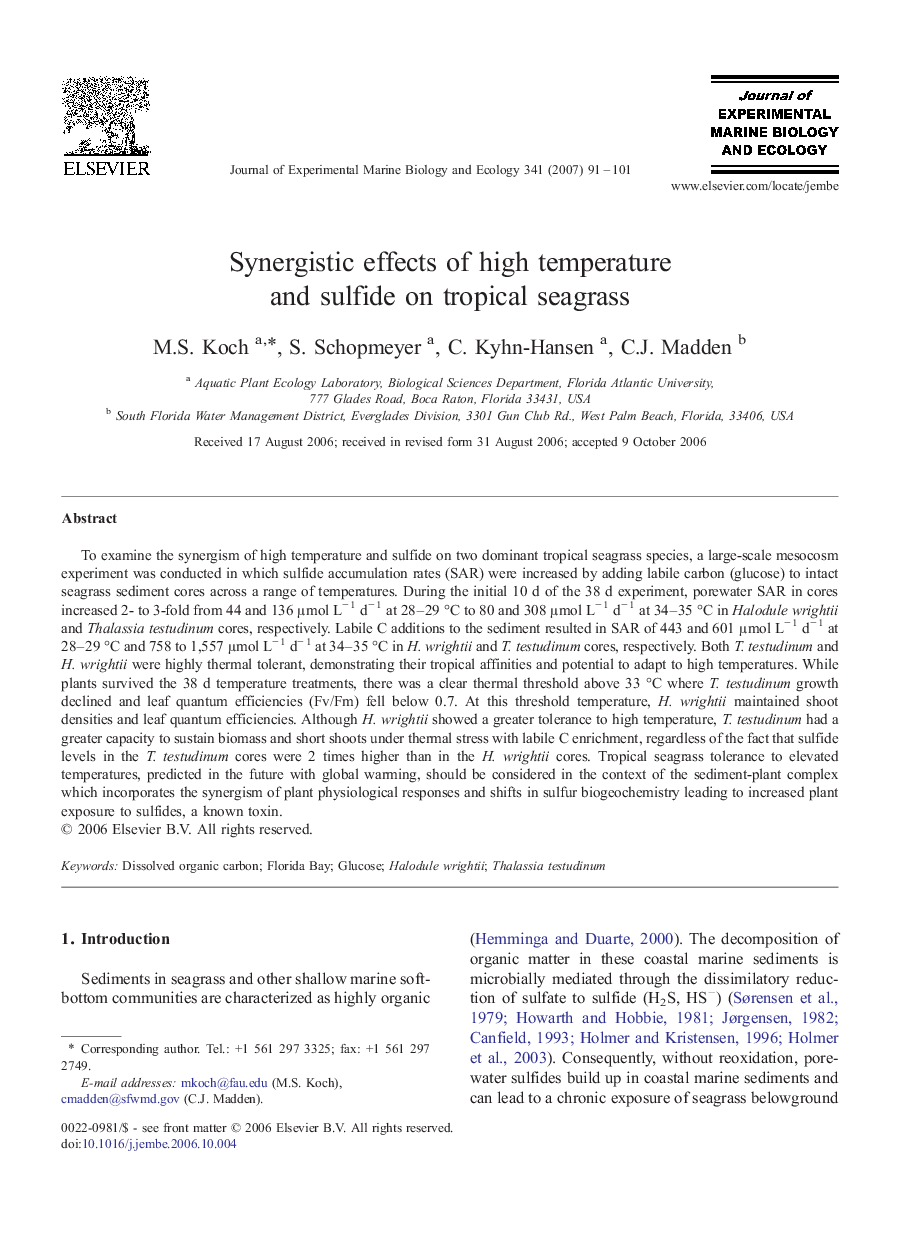| کد مقاله | کد نشریه | سال انتشار | مقاله انگلیسی | نسخه تمام متن |
|---|---|---|---|---|
| 4397840 | 1305909 | 2007 | 11 صفحه PDF | دانلود رایگان |

To examine the synergism of high temperature and sulfide on two dominant tropical seagrass species, a large-scale mesocosm experiment was conducted in which sulfide accumulation rates (SAR) were increased by adding labile carbon (glucose) to intact seagrass sediment cores across a range of temperatures. During the initial 10 d of the 38 d experiment, porewater SAR in cores increased 2- to 3-fold from 44 and 136 μmol L− 1 d− 1 at 28–29 °C to 80 and 308 μmol L− 1 d− 1 at 34–35 °C in Halodule wrightii and Thalassia testudinum cores, respectively. Labile C additions to the sediment resulted in SAR of 443 and 601 μmol L− 1 d− 1 at 28–29 °C and 758 to 1,557 μmol L− 1 d− 1 at 34–35 °C in H. wrightii and T. testudinum cores, respectively. Both T. testudinum and H. wrightii were highly thermal tolerant, demonstrating their tropical affinities and potential to adapt to high temperatures. While plants survived the 38 d temperature treatments, there was a clear thermal threshold above 33 °C where T. testudinum growth declined and leaf quantum efficiencies (Fv/Fm) fell below 0.7. At this threshold temperature, H. wrightii maintained shoot densities and leaf quantum efficiencies. Although H. wrightii showed a greater tolerance to high temperature, T. testudinum had a greater capacity to sustain biomass and short shoots under thermal stress with labile C enrichment, regardless of the fact that sulfide levels in the T. testudinum cores were 2 times higher than in the H. wrightii cores. Tropical seagrass tolerance to elevated temperatures, predicted in the future with global warming, should be considered in the context of the sediment-plant complex which incorporates the synergism of plant physiological responses and shifts in sulfur biogeochemistry leading to increased plant exposure to sulfides, a known toxin.
Journal: Journal of Experimental Marine Biology and Ecology - Volume 341, Issue 1, 13 February 2007, Pages 91–101